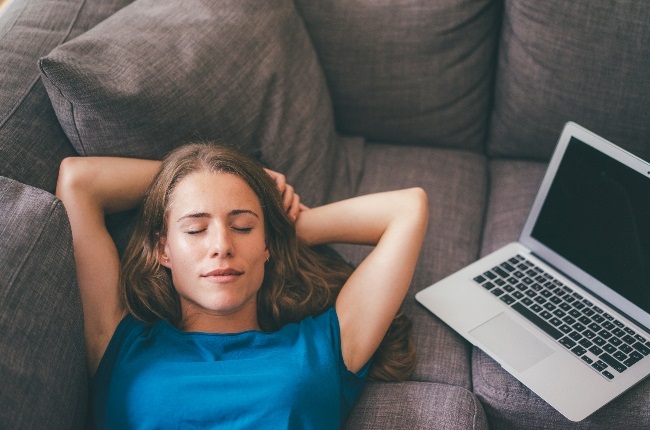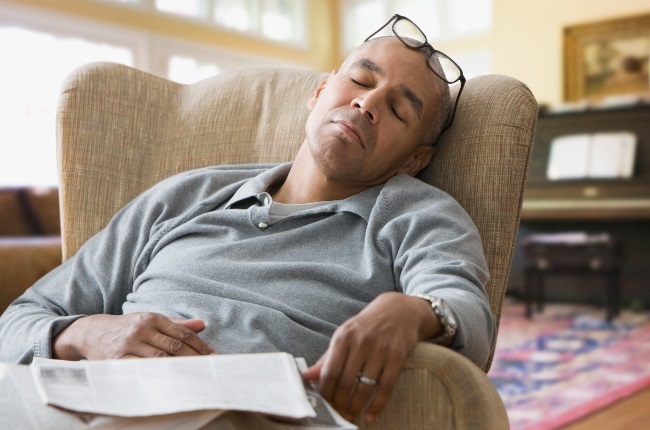
He's studied the disastrous consequences of poor sleep for years and now French neuroscientist Dr Brice Faraut is on a crusade to get people to take a nap.
Lack of sleep appears to be a growing problem, with more and more people having trouble falling asleep at night and many reporting disrupted sleep on a regular basis.
The solution, Faraut says, is simple – have a daytime doze.
“Known across the Mediterranean as a siesta, the daytime nap is a wonderfully protective night-time in miniature for repairing, soothing, healing and boosting – in as little as ten minutes,” Faraut says.
In this extract from his new book, Saved by the Siesta, he explains how to harness the power of the nap and how different kinds of naps have different benefits.
Nowadays, instead of giving sleep its rightful place in our lives, we sacrifice it on the altar of work or subdue it with drugs, or at least food supplements. In my own country of France, sleeping pills are regularly taken by 6–7% of the adult population while we consume 1,4 million packs of supplements containing melatonin every year.
Millions of people grapple daily with a lack of sleep that saps their energy, undermines their health and can even prove life-threatening. And yet there’s a simple solution to the problem: get some sleep. Which, in our hyperactive society, often means take a nap.
It is of pressing importance to give the nap its due, to acknowledge its therapeutic benefits.
After all, the habit of napping isn’t entirely alien to you: you did it every day, albeit sometimes reluctantly, for the first few years of your life.
Yet while you may have renewed a nodding acquaintance with the occasional catnap on weekends or holidays, you’ve likely never dared to ‘take it to the next level’.
It’s not just there to fill idle hours on lazy days of leisure, but to help your body and mind feel and function a little better every day, and to protect it from the chronic sleep debt from which nearly all of us suffer.
The power of the siesta lies precisely in its capacity to produce certain effects of a night-time sleep in record time – and the more accustomed you are to napping, the easier and the more effective it will be.
The ease with which we nap depends a great deal on our habits and penchants and not on any innate ability.
It’s understandable that some people should be reluctant to take a half-hour nap if it takes them about that long just to fall asleep.
It goes without saying that someone who’s overly stressed out will have a harder time nodding off than someone who’s relaxed.
Once again, however, learning to recognise moments of sleepiness and making a habit of napping in various circumstances will help you overcome the psychological state in which you happen to be.
Another objection non-nappers raise is the groggy state they’re in afterwards – known as ‘sleep inertia’.
This tendency to feel, after a nap, as though you’d been knocked out is once again due to a lack of practice – a bit like a novice mountaineer who climbs too far, too fast.
In 2006, a Canadian study of 40-odd students found that during a 20-minute catnap, regular nappers got more dynamic, light slow-wave sleep than non-nappers.
The regular nappers’ sleep was not as heavy (and yet not fragmented either), enabling them to shake off sleep inertia sooner and providing a better quality wake-up.
If napping seems to elude you, just keep practising. Familiarise yourself with your rhythms. Once you’ve experienced a successful catnap followed by an unexpected boost, repeat the experience again and again.
Get back into the habit
As a teenager you had a hard time falling asleep at night and, at least during the week, getting the sleep you needed for your development, so chances are you may have taken up this little lifesaver again for a while.
It’s estimated that 30-40% of adolescents between the ages of 14 and 19 take naps.
READ MORE| THE BIG READ: Here's how your dreams are helping your face your fears
Though, now an adult, you’ve nonetheless preserved the memory of this daily timeout. Whether or not you’re in sleep debt now, every day you’re reminded of napping’s absence when you feel that natural circadian slump befuddling your thoughts at some point between noon and 4pm (depending on whether you’re an early bird or a night owl).
When your brain can’t quite make all the connections anymore, you’ve reached a peak of drowsiness – so seize the opportunity: this is the ideal window for a snooze.
That’s what experienced nappers do. They make the most of the opportunity to doze off without delay, aided by the attendant drop in cortisol levels and body temperature.
It’s conditioned not by the make-up or heaviness of your midday meal, though that may be a factor, but by your biological clock.
After the age of 60, napping becomes more frequent again as the quality of night sleep declines.
It’s estimated that nearly half the population over 60 take a half-hour siesta around 1.30pm several times a week.
What’s the best napping position?
Those fortunate enough to work from home or able to go home for lunch can enjoy the luxury of a lie-down in bed or on the sofa.
The rest have to settle for making do: kipping in their seats, with their backs straight or reclined, their feet on the floor or on their desk, their heads on the desk between their hands, or whatever. Anything goes.
It’s up to you to find out what works best for you. But beyond the question of comfort, what impact will your position have on the quality of your sleep? And how will it affect the benefits you derive from your siesta, especially in terms of subsequent alertness?
Two studies found that lying down had a greater beneficial effect on the subsequent state of alertness.
However, if you’ve no choice but to nap in your seat, whether at a desk or in transit (in a car, train or plane), you have three options: you can sit upright (at least until you fall asleep), recline your seat (provided it’s a reclining chair with a headrest) or slump forwards with your head on something in front of you.
While there’s not much data on the pros and cons of leaning forwards during a nap, a recent study found the greater the angle of recline, the better the nap – the main reason being greater relaxation of the neck muscles.
In an upright position, it’s impossible to fall asleep without leaning forwards or to the side, which immediately wakes you.
The duration dilemma
I’m going to focus exclusively on naps that, at least in the sleep lab, have proven effective in counteracting the harmful effects of sleep debt: naps of about 10 minutes, naps of half an hour and naps of over an hour.
10- OR 30-MINUTE POWER NAP?
A short nap of about 10 minutes has come to be called a “power nap”.
Its main feature is that it doesn’t last long enough to produce post-nap sleep inertia.
But is a power nap long enough to affect drowsiness and cognitive performance?
Researchers at Flinders University in Adelaide, Australia, compared naps of five, ten, 20 and 30 minutes’ duration taken at 3pm after a night of only five hours’ sleep.
The results of eight tests the participants took after napping showed that five minutes of sleep improved cognitive performance only marginally.
The 10-minute nap, on the other hand, improved not only cognitive performance, but also alertness, on all eight tests.
READ MORE| Feeling anxious? Here are 6 tips on how to slay the panic vampire
Not only that, but the 10-minute nap had beneficial effects as early as five minutes after waking up and these beneficial effects lasted for a good 100 to 150 minutes.
The effects of the 20- and 30-minute naps didn’t begin to kick in till half an hour after waking up because of sleep inertia, but some of those effects lasted more than 100 to 150 minutes.
So a power nap of 10 minutes is energising and allows for immediate cognitive performance and its progressive improvement for 65 minutes.
A 20- and 30-minute nap, in contrast, does produce a few minutes of deep sleep, thus causing some sleep inertia upon waking and shows no effectiveness within five minutes of wake-up.
But after 155 minutes, they surpass the 10-minute power nap in terms of objective alertness.
Morning, midday or evening?
Duration isn’t the only thing to consider – the timing of your nap is almost equally important.
It needs to be in keeping with your biological clock – in other words, with your ‘sleep window’, which depends in part on your chronotype.
For early risers (morning chronotype), an early- afternoon nap exceeding 30 minutes will be richer in deep slow-wave sleep than in REM sleep.
The earlier your night sleep ends, the greater your sleep pressure in the early afternoon and, in turn, the more deep sleep you’re likely to get during a nap of more than 30 minutes.
For night owls (evening chronotype), the same nap at the same hour will be richer in REM sleep than in deep sleep.
So for a more restorative sleep, you have to put your nap off till as late as possible in the afternoon, while still making sure to leave an interval of at least six hours between the end of your nap and bedtime.
Don’t forget that how you feel upon emerging from deep slow-wave sleep also depends in large measure on your age and propensities.
So what’s best for you: early or mid-afternoon?
Do some trial runs, take advantage of the times when you feel the urge to doze and, based on your age, chronotype and needs, choose the hour and duration of your naps accordingly.
Bear in mind that, while sleep windows open roughly every two hours, the most suitable are those between noon and 4pm.
Still, you shouldn’t write off morning naps – if your nocturnal slumbers were cut off prematurely for one reason or another, a quick snooze sometime between 10am and noon can be quite restorative.
- Listen to your body and heed its calls for sleep without delay: waiting too long will make it harder to fall asleep.
- Concentrate on your breathing in order to relax and get to sleep more quickly. Basically, chill out.
- Banish all sources of blue light: switch off the screens of your electronic devices (computers, tablets, smartphones).
- Find a dark, quiet spot.
- The more naps you take, the easier it gets. It will become a pleasant and pleasurable habit.
- The ideal position is lying flat on a bed or sofa. If that isn’t available, sleep seated in an armchair. If possible, tilt the backrest at least 40 degrees (relative to upright position) and use a neck cushion.
10-minute nap
BENEFITS
- You’ll feel refreshed afterwards.
- Effective five minutes after wake-up: ideal before an important meeting or appointment.
- Highly effective in combating drowsiness and stimulating cognitive performance for a short while (two hours).
- Ideal for rapid recovery from a temporary slump in physical and/or intellectual capacities.
LIMITATIONS
- Not very effective for a longer duration: in cases of considerable sleep debt and chronic fatigue, this short nap won’t brace you for an extended period of wakefulness.
20- to 30-minute nap
BENEFITS
- Alleviates pain, stress; boosts immunity; reduces risk of illness and cardiovascular events.
- Stimulates alertness for over two hours. S Improves mood.
LIMITATIONS
- May cause sleep inertia (grogginess upon waking).
- Effects don’t kick in till 20-30 minutes later.
One- to two-hour nap
BENEFITS
- Ideal for repaying sleep debt faster.
- Effective preparation for night work: significantly improves alertness and cognitive performance for at least five hours after waking.
- Helps consolidate memory and boost creativity and immunity.
LIMITATIONS
- Sleep inertia after wake-up.
- In some older people, long naps may conflict with sleep-wake rhythms.
An edited excerpt from Saved by the Siesta by Brice Faraut (Scribe Publications), R335 by Takealot.com.
The price was correct at the time of press and is subject to change without notice.




 Publications
Publications
 Partners
Partners




















